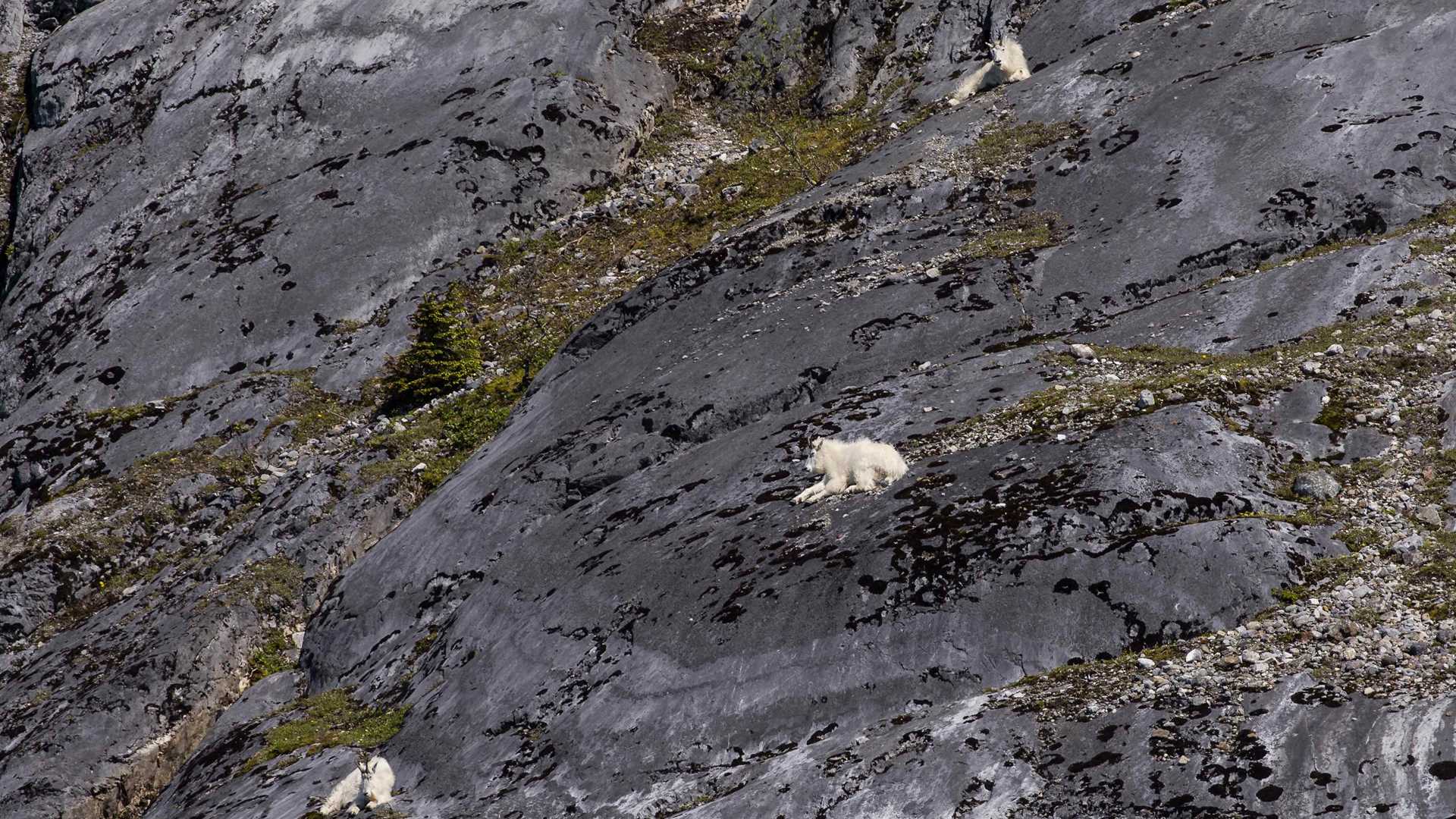We devoted the entire day to exploring one of the largest national parks in the United States. Glacier Bay National Park is a great place to study glaciation because, here, the presence or absence of glaciers has varied considerably over a relatively short period of time.
It is hard to believe that before the mid-1700s, there was no bay here at all, but rather a broad, fertile valley inhabited by Huna Tlingit (pronounced Kling-kit) people. They had lived here for thousands of years, enjoying a life of plenty, near a meltwater river that flowed from a huge glacier situated far up the valley. During the Little Ice Age of the 17th and 18th centuries, however, the glacier surged. It is now known as the Grand Pacific Glacier, and along with numerous tributary glaciers, it quickly pushed its way down the valley and covered the entire region with ice, thus forcing the Huna Tlingit to evacuate their village. This spectacular glacial movement bulldozed a tremendous amount of sediments and rock material ahead of it and scraped out the bay to produce the fjord we know it today.
When Europeans first arrived at the scene about two centuries ago, the entire bay was filled with glacial ice and there was a huge ice face blocking the entrance. At the beginning of the 19th century, the glacier began a fast retreat of about one mile per year until the ice had retreated more than 60 miles into the bay, exposing the spectacular fjord system that we can now explore with our vessel. Even so, there are still about a dozen tidewater glaciers and more than 30 alpine glaciers to be found here.
Glacier Bay National Park contains 3.3 million acres and together with Wrangell-St. Elias National Park (in Alaska) and Tatshenshini-Alsek Provincial Park (in British Columbia) forms a 25-million acre World Heritage Site and a UNESCO Biosphere Preserve.
National Geographic Quest entered Glacier Bay from Icy Strait early this morning and headed to the northern-most reaches of the fjord system. We enjoyed beautiful vistas and scenery all day long, and we saw many textbook examples of glaciology, including glaciers, fjords, meltwater streams, moraines, outwash plains, U-shaped valleys, cirques, hanging valleys, glacial flour, glacial scars, plant succession, and more.
We could see clear evidence of glacial retreat as we sailed northward through the national park, observing progressively younger forests and newly exposed ice-smoothed dolomite (banded sedimentary rock formed in a shallow, warm, marine environment) and granite bedrock. Glacier Bay has provided scientists with a spectacular laboratory in which to study the process of succession of both plant life and animal life in Southeast Alaska. By breakfast time, we had reached the very end of Glacier Bay at the head of Tarr Inlet, just a couple miles or so from the Canadian border. We stopped the ship here for a while in order to admire both the debris-covered, static Grand Pacific Glacier and the more pristine, very active Marjorie Glacier. We really concentrated on the Marjorie Glacier and our patience was rewarded with some calving.
We headed southward and sailed along the western shoreline, making a detour into the Johns Hopkins Inlet to view the Lamplugh and Johns Hopkins Glaciers. The Johns Hopkins Glacier is noteworthy not just for its beauty, but also for the fact that it is the only glacier in Glacier Bay that is advancing. At the moment, it is one of the very few glaciers outside of Antarctica that is advancing. The weather today proved to be quite extraordinary with crystal clear conditions allowing us to view the distant Fairweather Range, including Mount Fairweather itself rising to 15,329 feet above sea level. The blue sky and warm, sunny conditions made for a truly memorable experience here in Glacier Bay. In addition to the wonderful scenery, the day proved exceptional in our search for wildlife. Many species of sea birds were identified throughout the bay, as was expected, but the mammalian life proved exceptional. Seventeen brown bears and one black bear were sighted! And, not to be outdone, 24 mountain goats were counted! We cruised past the South Marble Islands, which are summer hangouts for breeding sea birds and supposedly non-breeding Steller’s sea lions (although we clearly saw one female with a newborn pup). Scattered about, we also saw many sea otters, occasional humpback whales, and even a few harbor porpoises.
Right after dinner, we berthed at the park headquarters in Bartlett Cove, where many of us took advantage of the late sunset and went ashore to walk on a beautiful trail through the forest. Near the lodge is an impressive reconstruction of the skeleton of an adult humpback whale, as well as exhibited Native American cultural items, including a huge canoe, a reconciliation totem, and a lodge house. The wildlife highlight was the sighting of a couple porcupines, which seem very much at home near the park headquarters. Since we know Bartlett Cove was freed of its ice cover only a couple centuries ago, it was interesting to observe how the impressive plant life and isostatic rebound has reclaimed the land.







